DO-IT News March 2020

Volume 28, Number 1
Below are the articles of the DO-IT News March 2020 newsletter. These articles can also be seen all on one page at the Full Newsletter option.
Neuroscience for Neurodiverse Learners
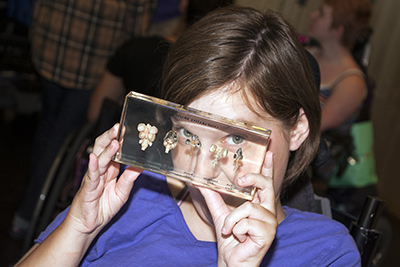
The DO-IT Center has received funding from the National Science Foundation (NSF) for a new 4-year, $1.5M project called Developing and Testing Innovations: Neuroscience for Neurodiverse Learners. The project, in partnership with the UW Center for Neurotechnology (CNT), will provide hands-on experiences in neuroscience disciplines, networking opportunities, and resources to high school and early postsecondary students identified as “neurodiverse” learners—those with academic challenges related to conditions such as dyspraxia, dyslexia, attention deficit hyperactivity disorder, dyscalculia, autism spectrum disorder, and Tourette syndrome—and disseminate findings to teachers of courses that are related to neuroscience and, more broadly, science, technology, engineering, and mathematics (STEM).
The goal of the project is to enhance student interest in and skills to successfully pursue STEM fields, as well as empower educators to serve these students more effectively. Eric Chudler, the project’s education director, said “Diversity of thought in engineering courses and projects is really important. I’m excited to meet new students and introduce them to the field of neuroscience.” Students will be learning about the structure and function of the nervous system and brain, as they engage in hands-on activities and interact with mentors. DO-IT has partnered with the CNT for many years, engaging students in CNT education programs (centerforneurotech.org/education).
DO-IT Receives Grant for Increasing Accessibility in Informal Science Learning Environments
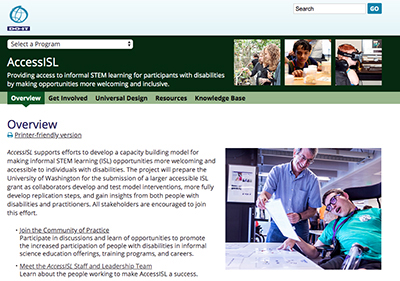
The University of Washington’s (UW) DO‑IT Center and Museology Program are collaborating on a newly funded two-year Access to Informal STEM Learning for Participants with Disabilities (AccessISL) project. It is funded by the National Science Foundation Advancing Informal STEM Learning (AISL) Pilots and Feasibility Studies program (grant #DRL-1906147). The $300,000 grant will support efforts to develop a capacity building model for making informal science learning (ISL) opportunities more welcoming and accessible to individuals with disabilities. Completing this project will prepare the UW for the submission of a larger AccessISL grant proposal to further test model interventions, more fully develop replication steps, and gain additional insights from both people with disabilities and practitioners.
“We are excited about the potential AccessISL has to increase opportunities for people with disabilities to learn about science through museums, science centers, zoos, and other informal science programs,” shares DO-IT Center director Dr. Sheryl Burgstahler.
The project will help faculty and ISL personnel increase knowledge, skills, and actions to make ISL programs, facilities, courses, and resources more welcoming and accessible to participants with disabilities and embed relevant practices within their work. The project aims to engage with both postsecondary STEM students with disabilities and museology students to increase knowledge and skills in advocating for ISL offerings that are welcoming and accessible to everyone and encourage individuals with disabilities to pursue careers in ISL.
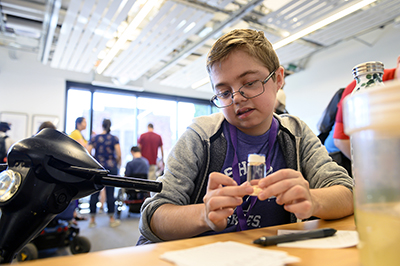
Dr. Meena Selvakumar, who is a lecturer in the UW Information School, states “The Museology Program is excited to integrate learnings and practices from the AccessISL project into our pedagogy. We believe this will have a positive impact on our emerging museum professionals as they go on to be agents of change in the field.”
Interested individuals are invited to join the AISL Community of Practice (CoP). The CoP provides opportunities for participants associated with ISL programs to share best practices, form collaborations, and highlight project activities. Staff of informal science education programs, educators, and other stakeholders are encouraged to apply.
For more information, visit the AccessISL website or email doit@uw.edu.
Erik Russell Wins 2019 AccessComputing Capacity Building Award

Erik Russell, Director of Programs at the Computing Research Association (CRA), is the 2019 winner of the AccessComputing Capacity Building Award. The award recognizes individuals whose work and accomplishments have changed the way the world views people with disabilities and their potential to succeed in challenging computing careers and activities. At the CRA, Erik primarily works in the development and management of programs that promote diversity and inclusion in the computing field. Since 2012, he has made sure that disability was always included in the conversation about diversity and inclusion at the CRA.
When the CRA’s Distributed Research Experiences for Undergraduates (DREU) program expanded to include other underrepresented groups besides women, Erik helped make sure that undergraduates with disabilities were eligible for the program and helped draft a memorandum that allowed AccessComputing staff to help in the matching process for undergraduates and mentors. When the CRA started the new Graduate Cohort for Underrepresented Minorities and Persons with Disabilities (URMD), Erik helped to make sure that graduate students with disabilities were eligible for that program. Erik represents the CRA as an AccessComputing Organizational Partner. We are thankful to Erik for his partnership over the years.
My Research on Amblyopia and Accessibility

I had already had ideas for a project around amblyopia—sometimes known as lazy eye—when I was working on a few other projects under Ph.D. students of Professor Mircea Teodurescu, who is married to Sri Kurniawan, the leader of the Assistive Sociotechnical Solutions for Individuals with Special Needs using Technology (ASSIST) Lab. Professor Teodurescu gave me a lab tour and invited me to attend his next lab meeting. After a few months, I told Mircea I was interested in using the lab’s virtual reality for a project related to amblyopia. He introduced me to Professor Kurniawan, and she agreed to fund me to research for them. At this time I was also already the leader for ALI (Accessibility Leadership and Internship), a group funded by the disability resource center on campus to destigmatize disability. I have been happily working for Sri’s lab, ASSIST Lab ever since.
The project I started working on came from my own experiences as a person with amblyopia. Amblyopia, though very serious, impacting everything from vision to reading comprehension, is treatable via occlusion therapy. Its effectiveness has been known for decades. However, compliance with occlusion therapy is infamously bad. Due to this, there has been a slew of new research looking into using 3D or virtual reality (VR) video games as therapy, with probably the most famous project being Vivid Vision. These research projects have been largely successful and offer an alternative to traditional treatment.
However, some of these projects, surprisingly, did not report great compliance with therapy. I was shocked when I first learned this. I was one of those people with amblyopia who was prescribed to do occlusion therapy and did not follow through with it—therapy was often very uncomfortable. As someone who loves VR, I started wondering why these projects did not have better compliance than traditional therapy; personally, I would love to play virtual reality games as my therapy. I started taking a look at some of the game designs that were being used and thought some of them might be problematic, considering the symptoms of amblyopia. I wanted to see if other people with amblyopia agreed with my analysis. I used Unity to create a VR video game like those being used in the most cutting-edge research.
While interviewing participants, I found some recurring themes. Visual crowding, when there are too many objects in one’s field of view, often bottlenecks object recognition. The visual crowding phenomenon is something people with amblyopia have a hard time with, and participants often requested less of it. Additionally, participants reported that having the key objects be large, “about the size of a small dinner plate,” and visually distinct was more comfortable. Furthermore, having haptic and audio feedback for confirmation of touch is beneficial. People with amblyopia have a loss of depth perception, making it critical to acknowledge in the game design process by adding features that acknowledge depth. Also, people with amblyopia have a difficult time reading. Thus, it makes sense our participants were in favor of play through instructions instead of text-based instructions. Participants did not like timed reading expectations in video games. For example, text that quickly pops up to tell you “slash as many as possible” and promptly disappears. Hopefully, if 3D and VR game creators take these insights into account, they are likely to have an increase in compliance and, therefore, overall efficacy.
Throughout my research and education, my disabilities have made my working process slower than that of other people in my major. It can be extremely frustrating, but I’ve learned that it is okay, and that I should be proud of what I can do. Additionally, as a symptom of one of my disabilities, I can have very rigid ideas of concepts and get stuck when it does not fit my rigid understanding. Since my disabilities are all invisible, many people do not understand when I get so stuck on certain concepts or ideas in computer engineering. There were many times in the past where I considered changing majors and felt I did not belong in this major. However, working closely with disability activists at ALI has opened my eyes to the value of communication, humility, and finding ways to make things work for me.
I have done a lot of work in accessibility. I used to work for Professor Azenkot at Cornell Tech, where I was doing accessibility research and writing academic papers on the subject. I was encouraged to submit a paper to the Student Research Competition, which was accepted. I got to showcase my poster to judges, and even made it to the semi-finals. I was extremely nervous, but it was a great opportunity, and I expected from there, that it was generally over. However, at the reception that night, I was shocked to receive first place—I had been extremely impressed with both projects that came in second and third. I was so full of adrenaline that I do not even remember physically walking up to the stage at the front of the theater. The entire experience was absolutely amazing and is my most fond memory from my career in research. ASSETS is not just a conference but a community of the most compassionate, motivated, and accepting people.
I was also fortunate enough to attend the Grace Hopper conference this year, where I was able to secure a job at Bank of America in accessibility. I was told that I will be working on making ATMs more accessible for people with disabilities as well as create software to make Bank of America a more comfortable place for employees with disabilities to work.
Resources from ADEPT about Engineering and Disability
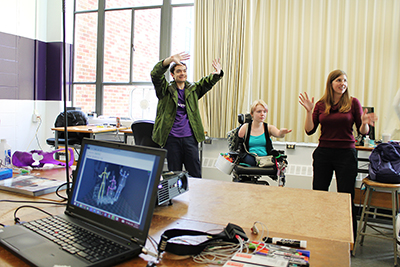
Accessible Design of Engineered Products and Technology (ADEPT) continues to build a strong and sustainable national network of engineering faculty, students, and professionals interested in and able to address issues related to disability, accessibility, and universal design (UD). ADEPT created a community and developed resources to engage this network in professional development activities to pique their interest in disability and accessibility and share best practices in incorporating these topics into engineering courses. This project was funded by the United Engineering Foundation.
ADEPT offers the following resources. Access these and more on the ADEPT website:
Training Webinars. Recordings of webinars feature engineering professionals, faculty, and students with disabilities discussing access issues and solutions, UD, and curriculum. Webinars are presented with captions on an accessible platform. Topics include perspectives of people with disabilities, design processes, campus accessibility efforts, accessible documents, legal frameworks, and more.
Accessibility Briefs. These guides outline topics and activities that could be included in engineering curricula or by faculty or students to further their understanding of accessibility. Topics include accessibility for deaf and hard of hearing, accessibility of engineering tools, accessible ideation, accessibility reviews, assistive technology , faculty learning community, makerspaces, personalized design, and more.
ADEPT also hosts a Community of Practice focused on accessibility in engineering. Faculty, students, and professionals share perspectives and expertise; suggest project activities; and share problems, solutions, and practices. To join the CoP, email doit@uw.edu.
Our Experiences as Speakers at the Grace Hopper Conference
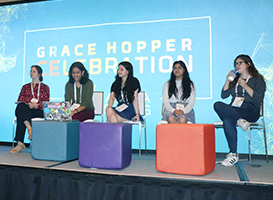
On October 1, 2019, more than 25,000 attendees gathered in Orlando, Florida for the Grace Hopper Celebration. As the world’s largest conference for women in computing, the five-day event hosted panels, mentoring sessions, an open-source codeathon, and talks on subjects ranging from technology trends to fostering diversity and inclusion in computer science. One such panel was “Navigating the Tech Scene With a Disability.” Moderated by Dr. Brianna Blaser from AccessComputing, the panel featured us, Meenakshi Das, a master’s student at Auburn University, and Naba Rizvi, a senior at the University of Toledo; Lauren Siegel, a senior at North Carolina State University; and Rebecca Krieger, a program manager at Microsoft. The panelists discussed how to navigate disabilities in the context of education and employment. Women with disabilities are a double minority in computer science and often feel they do not fit into the technology scene. This panel attempted to foster discussions among not only women with disabilities but also provide advice to universities and companies on how they may better support people with disabilities.
Additionally, there was an open dialogue about making conferences such as the Grace Hopper Celebration more accessible. Examples of desirable accommodations at conferences included having live captioning and sign language interpretation available for deaf and hard-of-hearing attendees, placing signs and maps lower to make them more accessible for attendees in wheelchairs, and providing sighted guides for blind and low vision attendees. Guidance on how to approach interview accommodations like extra time, different modes of communication, and alternative methods of technical interviewing were also given.
The panel received excellent feedback from the audience, many of whom stayed back for further questions and networking with panelists. As stated by one of the panelists, Lauren Siegel, “it’s not just about making a single event more accessible, it’s about changing our society’s attitudes toward people with disabilities.” Panels such as this are paving the way for a more inclusive society.
2019 Tapia Celebration of Diversity in Computing
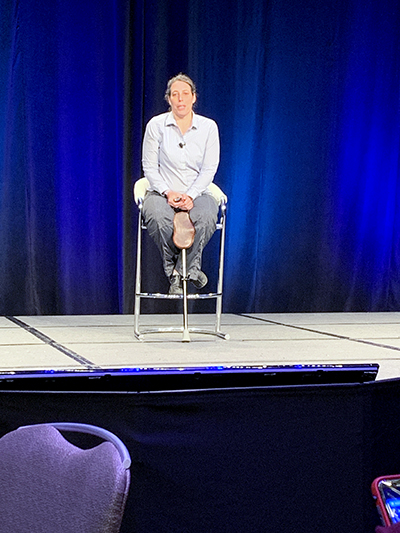
This September’s Tapia Celebration of Diversity in Computing, held in San Diego, CA, was the biggest Tapia Celebration yet, as well as the first one to have an accessibility committee.
As chair of the accessibility committee, I was lucky to have a great group of committee members, including AccessComputing PI Richard Ladner, Jerri Barrett, Rua Williams, and Synge Tyson. We were able to increase accessibility and inclusion at the conference, which a specific focus on the following important items:
- Electronic versions of posters and presentations available online.
- An accessible version of the conference program
- A quiet room
- Increased training for student volunteers
- Information about conference accessibility on the website
It will be exciting to see how accessibility continues to improve at Tapia in future years.
We were also excited to provide travel funding for 11 AccessComputing team members to attend Tapia, as well as see many other of our students as well. The conference kicked off with a keynote presentation from the University of Washington’s Jen Mankoff on “Making Accessibility,” and there were several other sessions on the conference program that focused on or addressed disability.
Scholarship applications to travel to Tapia are due on March 27. Scholarships can include conference registration, meals during the conference, hotel accommodations, and a reimbursable travel stipend. To learn more and apply, visit www.tapiaconference.org/participate/scholarships/.
2019 Resume Activity
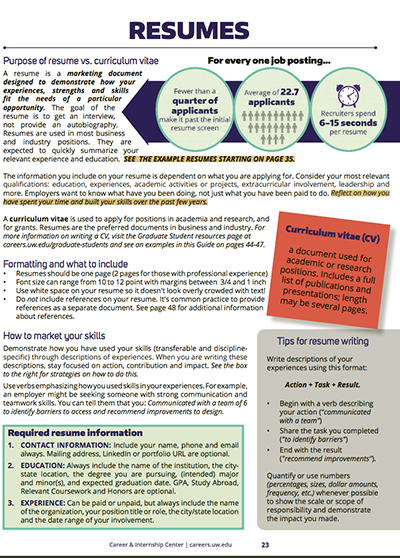
If you are applying for summer internships, now is the perfect time to update and edit your resume to make sure you have the best application possible.
Every year AccessComputing and AccessSTEM participants get the chance to engage with staff and get feedback on their resumes through our annual resume contest. We look at formatting, grammar, content, and how well the resume reflected the student’s success. Below are some common themes and questions that came up.
Should I include social media?
Including professional social media links has become a big change in resume practices. This is something you need to pay attention to, because being intentional about what you include is imperative to showcasing not only your additional projects and information relating to your academic work, but also your personality. You may choose to include your LinkedIn profile, an online portfolio, or your GitHub link.
How do I get past the “bots”?
The first hurdle in getting your resume in front of employers is getting through resume scanning software that helps determine whether a certain applicant is qualified for the job. If your resume doesn’t have enough keywords or phrases that match the job description it may be automatically removed from the pool. Scatter some keywords throughout your resume that are directly from the job description. To do this, consider including a skills section. This could consist of programming languages, software, or other specific skills you wish to highlight. Pay special attention to the skills directly related to the job to which you are applying. Many articles online recommend sending employers Word documents so that your resume can be scanned properly, although most scanners can now read PDFs.
How do I make my resume easier to read?
Some resumes simply have too much content. Make your resume concise by limiting each job’s duties to three or four bullets, cutting irrelevant positions, and making use of white space.
Is my resume too short/too long?
The length of your resume is important to consider. It looks more professional to have a resume one full page or two full pages rather than including partial pages. All the information you include should have a purpose, not merely “fluff” to make it longer. If you include an objective statement make it as specific as possible and think about whether an objective statement could be included it in a cover letter instead.
The resume submissions reinforced the amazing academic achievements and skills of the AccessComputing and AccessSTEM team members. Whether it was highlighting their GPAs, internships, scholarships, and publications, or how they’ve entered their careers, we are proud of everyone’s accomplishments.
DO-IT staff are always available to help students revise their resumes and give feedback. University career centers are also a good resource to go to for in-person help.
Memes, F*** Stairs, and Social Change
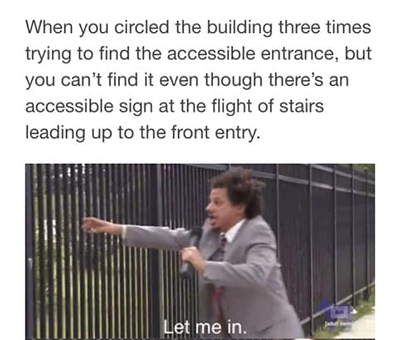
As memes, slang, and social media are slowly becoming more embedded into our lives, both 2014 and 2015 Scholars Lindsey Muszkiewicz and Grady Thompson are using social media to make a difference in the disability community at the University of Washington.
Both Lindsey and Grady are part of the Associated Students of the University of Washington (ASUW), acting as interns on the Student Disability Commission (SDC). This Commission works on developing events and programs related to disability awareness.
One of the most significant campaign projects that the SDC took on last year was F*** Stairs. In this campaign, students who aren’t wheelchair users are challenged to not use any stairs around campus for a month. Every time a student couldn’t find a ramp entrance or accessible path, they were asked to write it down to document the lack of accessibility.
“I think it’s a step in the right direction to fight for eventually changing things so they are more inclusive of everyone,” Lindsey stated.
As a double major in comparative history of ideas (CHID) and disability studies, with a focus on disability representation in the media, Lindsey uses her education, her passion for disability activism, and her talent for comedy to create memes that are relatable and funny but illustrate the privilege that people without disabilities have. With youth becoming more attached to social media, it is becoming a better and further reaching tool for accessible social activism; Lindsey's work highlights the importance of raising awareness and gaining support through humor.
Grady draws attention to the fact that though their focus is disability empowerment by creating campaigns and events like F*** Stairs, most of their funding has to be put towards accommodations instead of the events themselves. Many clubs and events don’t have the funding for accommodations. This develops a barrier for many students. One example of this is ASL interpreters. Clubs often don’t have the money to pay for one, so it falls on the responsibility of the SDC to find the funds to provide access to events and clubs to students who don’t otherwise have it.
Recently, Grady, working with a team, was able to pass a bill to create an office of inclusive design that focuses on creating a more accessible campus for everyone. The budget isn’t perfect yet, but change is being made to create a path to inclusive design.
About DO-IT
DO-IT (Disabilities, Opportunities, Internetworking, and Technology) serves to increase the successful participation of individuals with disabilities in challenging academic programs and careers, such as those in science, engineering, mathematics, and technology. Primary funding for DO-IT is provided by the National Science Foundation, the State of Washington, and the U.S. Department of Education.
For further information, to be placed on the DO-IT mailing list, request this newsletter or other materials in an alternate format, or make comments or suggestions about DO-IT publications or web pages, contact us at

DO-IT
University of Washington
Box 354842
Seattle, WA 98195-4842
doit@uw.edu
www.uw.edu/doit/
206-685-DOIT (3648) (voice/TTY)
888-972-DOIT (3648) (toll free voice/TTY)
509-328-9331 (voice/TTY) Spokane
206-221-4171 (fax)
Founder and Director: Sheryl Burgstahler, Ph.D.
Program Manager: Scott Bellman